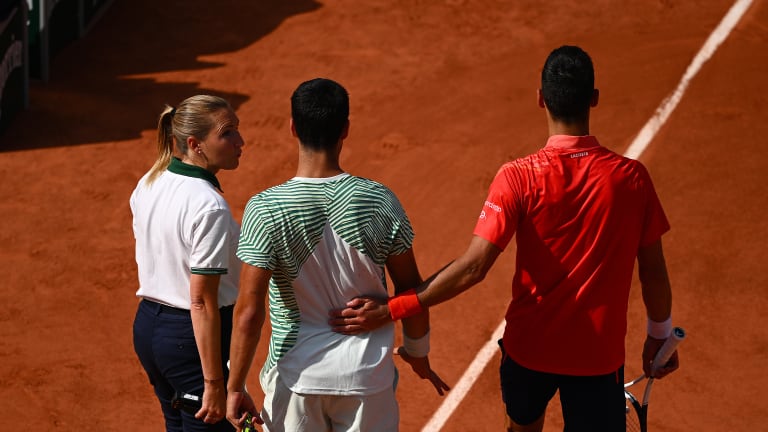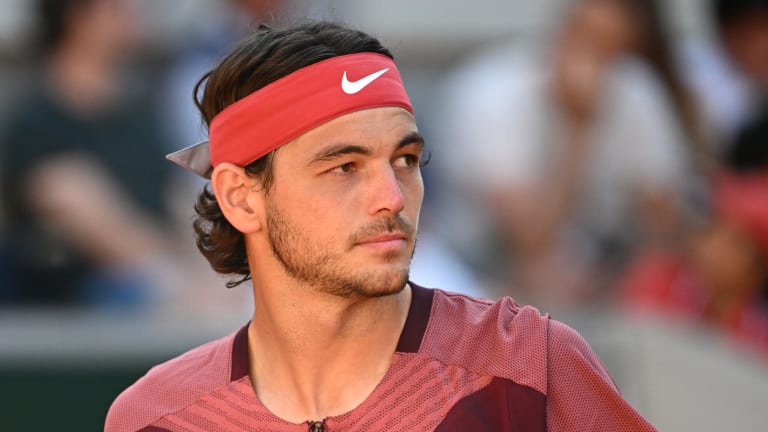Novak Djokovic's seemingly endless excellence is the top story of the 2023 ATP season so far
By Jun 12, 2023Stat of the Day
Novak Djokovic breaks Roger Federer's record for oldest player ever to reach a Masters 1000 semifinal
By Mar 27, 2025Miami, USA
Novak Djokovic's Miami Open quarterfinal postponed after Pegula, Raducanu play past 11 p.m.
By Mar 27, 2025Style Points
Miami Open Fashion Roundup: Seven looks that ace South Florida style
By Mar 26, 2025Miami, USA
Novak Djokovic vs. Sebastian Korda: Where to Watch, Miami Open Preview, Betting Odds
By Mar 26, 2025Miami, USA
Novak Djokovic lights up Miami Open as Serena Williams, Juan Martin del Potro watch on
By Mar 26, 2025Miami, USA
Novak Djokovic vs. Lorenzo Musetti: Where to Watch, Miami Open Preview, Betting Odds
By Mar 25, 2025Pick of the Day
Miami Open Betting Preview: Lorenzo Musetti vs. Novak Djokovic
By Mar 25, 2025Social
Novak Djokovic's warning about "future superstar” Joao Fonseca amid Miami breakthrough
By Mar 24, 2025Stat of the Day
Novak Djokovic breaks Rafael Nadal’s record for most career wins at Masters 1000 events
By Mar 23, 2025Novak Djokovic's seemingly endless excellence is the top story of the 2023 ATP season so far
But that's not the only intriguing plotline of the year to date.
Published Jun 12, 2023
Advertising
Advertising
Advertising

Quantitative achievements are only part of the way Djokovic has redefined greatness.
© Getty Images
Advertising

Alcaraz's cramping episode in the semifinals put a dampener on a highly-anticipated match.
© 2023 Getty Images
Advertising

After a successful Australian Open, Roland Garros was a frustrating one for the American men.
© Corbis via Getty Images